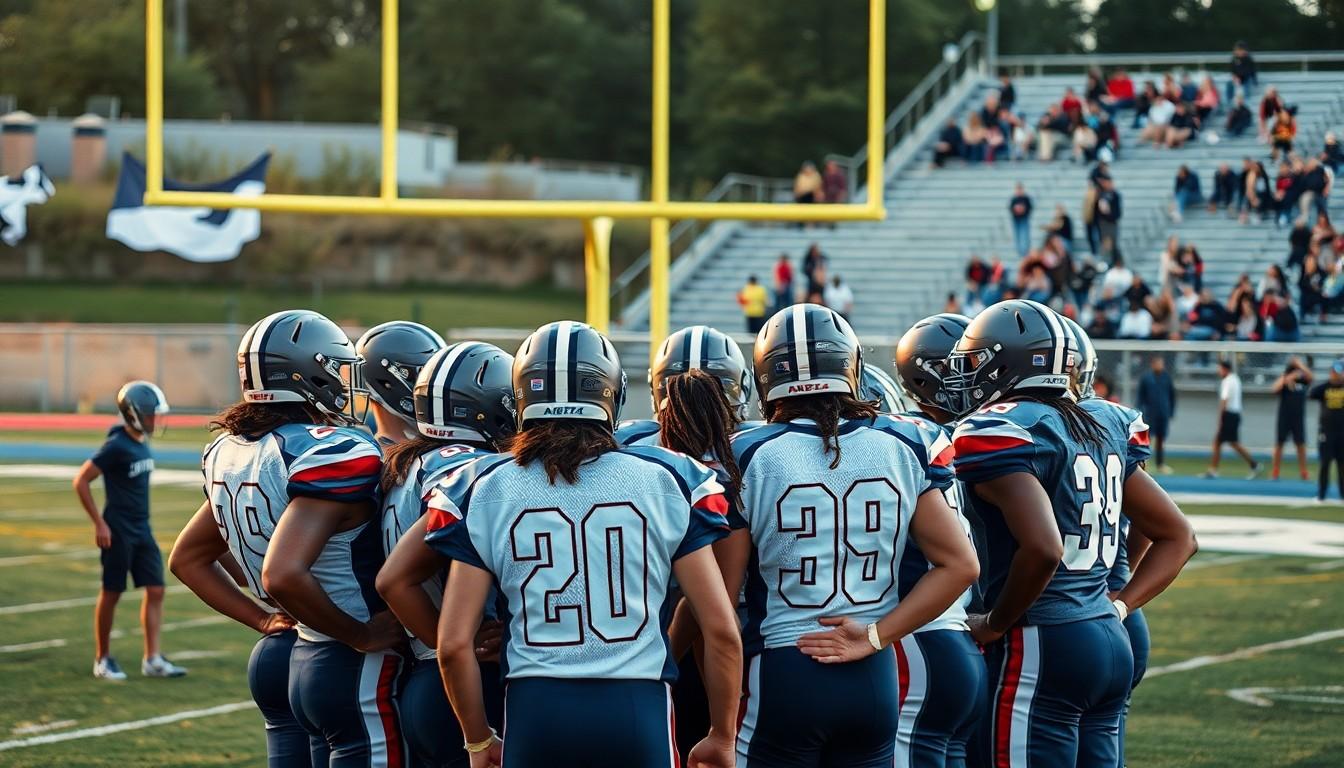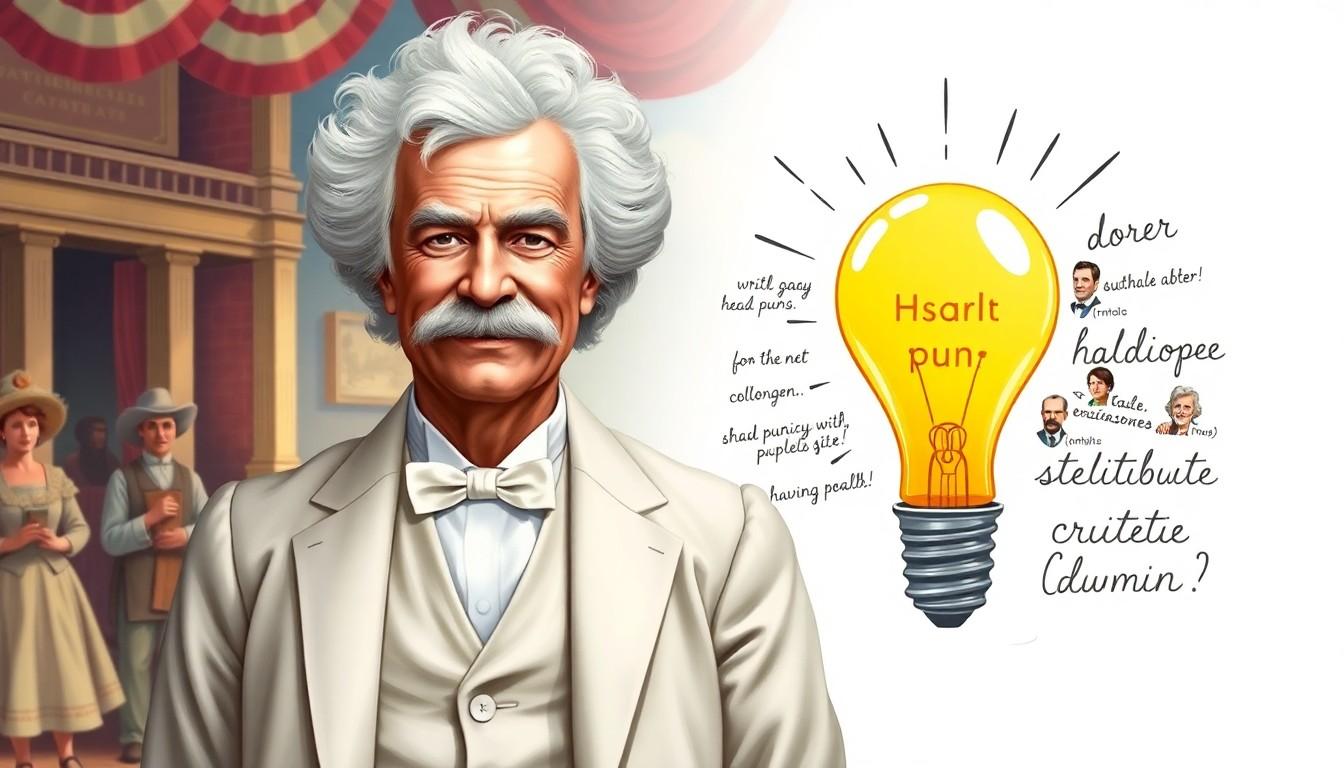Looking for some head-turning wordplay to liven up your conversations? We’ve gathered the most amusing head puns that are sure to make anyone laugh out loud. These clever jokes aren’t just entertaining—they’re perfect for breaking the ice at parties, adding humor to presentations, or simply brightening someone’s day.
We know that finding quality puns can be a real head-scratcher, which is why we’ve done the hard work for you. From witty one-liners to clever comebacks, our collection of head puns covers everything from headgear to headaches and beyond. Whether you’re a pun enthusiast or just looking for something to make your friends groan with delight, you’ll find plenty of head-spinning humor to enjoy.
10 Head Puns That Will Make You Laugh Your Head Off
- Head over heels in pun! We’ve all heard about falling head over heels for someone, but have you heard about the guy who tripped while thinking of a joke? He literally fell head over heels for a pun!
- Use your head! My friend tried to open a door with his head instead of his hands. I told him, “That’s not what people mean when they say use your head!”
- Heading in the right direction. The confused GPS kept giving contradictory directions until I said, “Let’s head north instead.” It replied, “Now you’re heading in the right direction with these puns!”
- Don’t lose your head. During the Halloween party, my friend’s costume head fell off. I quickly said, “Don’t lose your head over it—that’s my job as the headless horseman!”
- Headstrong opinions. My buddy refuses to change his mind about anything. He’s so headstrong that even a helmet couldn’t protect him from hard-headed criticism!
- Heads up! The baseball was flying toward us when I shouted, “Heads up!” My literal-minded friend actually looked up instead of catching the ball, resulting in a memorable bump.
- Head of the class. Our teacher was so smart we called her the head of the class, until she bumped into the door frame and we realized even brilliant minds need to watch where they’re going!
- Headbanging to the beat. My grandpa walked in on me headbanging to heavy metal music and said, “In my day, we only did that accidentally when falling asleep in class!”
- Heading to conclusions. My friend jumped to conclusions so quickly about who ate the last cookie that I told him, “You’re heading to conclusions faster than a soccer player!”
Getting Ahead: Why Head Puns Are So Popular

Ever wonder why head puns make people laugh? We’re diving into the science and cultural significance behind these popular wordplays.
The Psychology Behind Head Humor
Head puns trigger positive emotional responses in most people, according to research from Northern Illinois University. Unlike practical jokes that might offend, head puns are generally victimless forms of humor that rarely elicit negative reactions like disgust or contempt. The cognitive processing required to understand a good head pun actually enhances the enjoyment factor. When you hear a head pun, your brain works through multiple layers of meaning—decoding the statement, recognizing the contradiction, and building new contextual understanding to appreciate the joke. This mental exercise involves processing homophones, exploring word polysemy, and interpreting idioms in unexpected ways, creating a satisfying “aha” moment when you get the joke.
Head Puns in Popular Culture
Advertisers frequently leverage head puns to create memorable marketing campaigns that resonate with consumers. Studies show that advertisements featuring puns are rated as more attractive, original, and effective than those without wordplay. The cognitive engagement stimulated by these puns leads to stronger brand recall and positive associations. Television shows and films often incorporate head-related wordplay to add humor and create memorable dialogue that audiences quote long after viewing. Social media has further amplified the popularity of head puns, with 59% of Americans reporting an affinity for pun-based humor according to YouGov research. This widespread appreciation correlates with higher education levels, suggesting that the intellectual appeal of deciphering head puns may attract more educated audiences. From marketing slogans to viral memes, head puns have firmly established themselves as versatile tools for captivating audiences across various media platforms.
Clever Head Puns for Daily Use

Head puns are perfect for spicing up everyday conversations and adding a touch of humor to routine interactions. These versatile wordplays can be used in many situations to break the ice or simply brighten someone’s day.
- “Two heads are better than one.” This classic phrase works wonderfully when encouraging collaboration on projects or tasks. It’s especially effective when facing challenges that require multiple perspectives.
- “Head’s up! Here comes trouble.” Use this playful warning to alert friends or colleagues about an approaching situation that might need their attention. This pun combines practicality with humor.
- “Head in the game, heart on fire.” Perfect for motivational moments, this expression encourages someone to stay focused while maintaining their passion and enthusiasm.
Professional Head Puns for the Workplace
The office environment provides many opportunities to incorporate clever head puns that remain workplace-appropriate while adding a touch of personality to professional communications.
- “Two heads are better than one, especially in a literature review.” This refined version of the classic pun works exceptionally well in academic or research settings, emphasizing the value of collaboration when examining complex materials.
- “Actions speak louder than words, but evidence speaks volumes.” While not strictly a head pun, this adaptable phrase highlights the importance of data-driven decision making in professional contexts.
- “Let’s put our heads together on this proposal.” This encourages teamwork while maintaining a professional tone, perfect for collaborative projects that require multiple perspectives.
Casual Head Jokes for Friends and Family
With close friends and family, head puns can take on a more playful and affectionate tone, creating moments of shared laughter and connection.
- “I love you from head to tomatoes.” This endearing twist on “from head to toe” delivers a sweet message with a dash of humor, ideal for showing affection to loved ones.
- “Let’s head out on a ghost hunt.” Adventure-seeking friends will appreciate this punny invitation that combines action with wordplay.
- “She’s head over heels about her new job.” Use this common expression to describe enthusiasm or complete infatuation, whether it’s about a new relationship, hobby, or opportunity.
- “You’ve got a good head on your shoulders.” This complimentary pun acknowledges someone’s intelligence or good judgment while incorporating a subtle head reference.
Head Over Heels: Romantic Head Puns for Your Significant Other

Expressing Admiration
Looking to show your partner how special they are? Try telling them they’re “head and shoulders above the rest.” This classic pun communicates that you see them as superior to everyone else in your life. Another heartfelt expression is simply saying “I’m head over heels for you,” which perfectly captures that feeling of being completely smitten with someone special.
Compliments
Flattery with a twist makes your affection memorable. Tell your important other “Your head is so beautiful, it’s a work of art” for a compliment that’s both sincere and playful. Admiration can also be shown by saying “You always keep your head held high, and I admire that,” acknowledging their confidence and strength of character in a charming way.
Affectionate Teasers
Gentle teasing creates intimate bonds between partners. Say “Your head is so big, but your heart is even bigger” for a playful jab that ends with genuine appreciation. Express your admiration for their balanced approach to life with “I love the way you always use your head and your heart together,” highlighting their emotional intelligence and thoughtfulness.
Playful Jokes
Humor strengthens relationships and creates shared moments of joy. Tell your partner “I couldn’t have asked for a better person to put our heads together with” to emphasize your collaborative spirit. When they make you feel excited or dizzy with love, let them know “You make my head spin in the best way possible” for a cute acknowledgment of your feelings.
Sweet Gestures
Small verbal affections can mean everything in a relationship. Saying “You’re always on my mind, and that’s a lot of headspace” tells your partner they occupy your thoughts consistently. Celebrate your problem-solving connection with “I love how we can just put our heads together and figure things out,” highlighting the practical benefits of your partnership.
Romantic Humor
Combining romance with humor creates memorable expressions of love. Tell your partner “She’s head over heels, but her feet are firmly planted on the ground – just like with you” to compliment their balance of passion and practicality. Sometimes contradictory compliments work best: “You have a big head, but your thoughts are always so thoughtful and kind” playfully acknowledges their intelligence while praising their caring nature.
Using Head Puns to Lighten Tense Situations

Head puns can be powerful tools for diffusing tension and creating a more relaxed atmosphere in stressful situations. The science behind their effectiveness is fascinating and rooted in both psychology and neurology. Let’s explore how these clever wordplays work on our brains and why they’re so effective at breaking the ice.
Brain Processing of Puns
Head puns activate multiple regions of the brain simultaneously, making them neurologically captivating. Research shows that our left hemisphere first processes the basic language components of the pun. Then our right hemisphere takes over to resolve the semantic incongruity that creates the humor. This dual-hemisphere engagement makes puns a uniquely stimulating form of wordplay that can instantly shift attention away from tense situations.
The Science of Humor Relief
The incongruity-resolution theory explains why head puns make us laugh even in stressful moments. When we encounter the unexpected twist in a pun like “Your head is so big that your right ear is in a different time zone to your left,” our brains work to resolve this incongruity. This mental resolution triggers a dopamine release, creating a sense of pleasure and reward. Dopamine acts as a natural stress reliever, helping to lighten even the most tense atmospheres.
Social Connection Through Humor
Head puns foster social bonds by creating shared moments of levity. People naturally connect through humor, and puns specifically can build rapport through their cleverness. Saying something like “Not just a pretty face, I’ve got a lot going on in the head department” can instantly transform a tense meeting or awkward silence into an opportunity for connection. These wordplays signal approachability and emotional intelligence.
Strategic Implementation
Timing matters significantly when using head puns to defuse tension. Introducing a pun like “Working on a project about headaches, and it’s giving me a real headache!” can redirect attention from conflict to humor. The key is choosing puns that acknowledge the situation without diminishing its importance. Workplace conflicts, uncomfortable social gatherings, and even personal disagreements can benefit from this cognitive redirection technique.
Real-Industry Applications
Head puns work particularly well in professional settings where maintaining relationships is crucial even though disagreements. They can serve as pattern interrupts during heated discussions, shifting the brain’s focus and allowing participants to approach problems with renewed perspective. Medical professionals often use head puns with patients to reduce anxiety, while educators employ them to make difficult concepts more approachable and memorable for students.
Headstrong Humor: Puns About Stubbornness and Determination

Some personalities just won’t budge, and what better way to celebrate that tenacity than with some stubborn head puns? We’ve gathered the best wordplay about determination and headstrong attitudes that will make even the most serious person crack a smile.
The Determined Mindset
- “Two heads are better than one” – This classic pun works perfectly when describing collaborative determination, especially when both parties are equally stubborn about reaching their goals.
- “I need to get ahead in my studies; I can’t afford to lag behind” – Students and professionals alike can relate to this determined sentiment that cleverly plays on forward movement.
- “Can’t promise, but I’ll do my best to stay ahead of the game” – This pun showcases proactive determination while maintaining a realistic outlook.
- “He’s a head case, but I’m perfectly sane in my insanity” – Sometimes being headstrong means embracing your unique approach, even when others question your methods.
Contradictions in Character
- “His head is in the clouds, yet he’s grounded in reality” – This oxymoronic pun captures the essence of dreamers who maintain practical determination even though their lofty aspirations.
- “He’s a walking contradiction, full of headstrong indecision” – The paradox of being simultaneously stubborn and wavering creates a humorous reflection on human complexity.
- “My thoughts are organized chaos; it’s a tidy mess in my head” – Determined individuals often have minds that appear chaotic to others but follow their own internal logic.
Success Through Stubbornness
- “Why are skulls always successful? Because they know how to get ahead” – This skull-related wordplay highlights how determination can lead to achievement.
- “I’ve got a big head start… but unfortunately, it’s just my ego” – Starting strong is important, but this pun reminds us that excessive pride can sometimes masquerade as determination.
- “The headmaster didn’t just talk the talk; he was determined to get inside everyone’s head” – Educational leadership requires both stubbornness and understanding to effectively reach students.
These headstrong puns showcase the amusing side of determination while acknowledging that sometimes being a bit stubborn is exactly what’s needed to succeed. Whether you’re praising a friend’s persistence or poking fun at your own unwavering nature, these puns provide the perfect blend of humor and recognition for those who refuse to back down.
Head-to-Head: Competitive and Sports-Related Head Jokes

Sports and competition provide fertile ground for some of the most entertaining head puns. We’ve compiled a collection of jokes that will score points with athletes and sports enthusiasts alike.
Championship Wordplay
- “Keep your head in the game to stay ahead” – Perfect for motivating teammates before a big match, this pun emphasizes the importance of focus while cleverly incorporating the word “ahead.”
- “Head-to-head competition is where the real challenge lies” – This phrase works brilliantly when discussing rivalries or direct competitions between evenly matched opponents.
- “A head start can make all the difference in a race” – Use this when talking about the advantages of early preparation in competitive situations.
- “Head and shoulders above the competition” – A great way to describe a standout athlete who dominates their sport with superior skills.
Team Spirit Teasers
- “Two heads are better than one, especially in a team sport” – This classic saying gets a sports makeover, highlighting the value of collaboration in athletics.
- “Head in the game, heart on fire” – A motivational phrase that captures the perfect balance of strategic thinking and passionate play needed for success.
- “Heading for victory requires both skill and determination” – This pun works particularly well for soccer fans, playing on the “heading” technique while discussing what it takes to win.
- “The coach needs to head off problems before they affect team performance” – A subtle play on words that coaches might appreciate when discussing proactive leadership.
Pregame Pep Talk Puns
- “Let’s put our heads together and devise a winning strategy” – Encourages teamwork while incorporating head terminology in a natural way.
- “Heads up play will give us the advantage today” – Reminds athletes to stay alert while cleverly using the “heads up” phrase that’s already common in sports lingo.
- “Don’t lose your head when the pressure mounts” – Advises keeping calm under pressure with a fitting head reference.
- “Use your head to outthink opponents, not just outplay them” – Emphasizes the mental aspect of sports competition with a straightforward head pun.
Leadership and Authority Head Puns

Leading a team requires skill, patience, and occasionally, a well-timed pun to lighten the mood. Head puns can be particularly effective in leadership contexts, helping to establish rapport while conveying important messages in a memorable way. Research shows that these puns engage multiple regions of the brain, involving both the left hemisphere for language processing and the right hemisphere for contextual understanding, which triggers dopamine release and enhances team morale.
Collaborative Leadership Wordplay
“Two heads are better than one” stands as the classic collaborative leadership pun that emphasizes the value of teamwork and shared decision-making. This timeless expression reminds teams that combining intellectual resources often leads to superior outcomes. Managers can use this phrase when initiating brainstorming sessions or when encouraging departments to work together on complex projects.
Humorous Team Alerts
“Head’s up! Here comes trouble” serves as a playful way to alert your team to upcoming challenges without creating unnecessary panic. This lighthearted warning can prepare staff for potential difficulties while maintaining a positive atmosphere. Team leaders often deploy this phrase before introducing new deadlines or when announcing important changes to workflow procedures.
Executive Decision Making
The humor in leadership-focused head puns follows the incongruity-resolution theory, which explains why the unexpected twist in these puns makes messages more memorable for team members. When a leader says, “Let’s put our heads together on this proposal,” they’re not only suggesting collaboration but also creating a mental image that helps cement the concept in everyone’s minds.
Authority With Approachability
Head puns allow leaders to demonstrate authority while remaining approachable and relatable to their teams. Using humor strategically helps break down hierarchical barriers that might otherwise inhibit open communication. Phrases like “I need everyone to head in the same direction on this project” communicate clear expectations while maintaining a conversational tone that encourages engagement.
Headway Heroes: Historical Figures Who Used Head Humor

While historical figures might not have specifically focused on head puns, several renowned wordsmiths and humorists demonstrated exceptional wit that often included clever wordplay. These intellectual giants used their brilliant minds to create humor that has stood the test of time.
Mark Twain
Mark Twain, born Samuel Clemens, mastered the art of witty observations and clever language. His writings are treasured for their sharp humor and social commentary. Though not exclusively creating head puns, Twain’s natural ability to play with words made him a pioneer of American humor that could certainly include head-related quips had he put his mind to it.
Oscar Wilde
Oscar Wilde captivated society with his razor-sharp wit and memorable phrases. His expertise in crafting clever observations and paradoxical statements would have made him perfectly capable of delivering sophisticated head puns. Wilde’s quick thinking and verbal dexterity allowed him to shine in any conversation, often leaving his audience both amused and intellectually stimulated.
Groucho Marx
Groucho Marx elevated comedy with his lightning-fast comebacks and wordplay. As a master of one-liners and humorous observations, his style of comedy frequently involved clever puns that could easily incorporate head-related humor. Marx’s distinctive eyebrows, mustache, and expressive face emphasized his verbal jokes, creating an unforgettable comedic presence that influenced generations of humorists.
Shakespeare’s Wordplay
William Shakespeare filled his plays with puns and clever linguistic tricks that delighted Elizabethan audiences. His works contain many examples of wordplay that demonstrate his unmatched linguistic prowess. Shakespeare understood how humor could enhance storytelling and engage audiences, using puns to add depth to his characters and situations throughout his extensive body of work.
Modern Head Puns Inspired by Historical Wit
Today’s head puns draw inspiration from these historical masters of wordplay. Examples like “I love you from head tomatoes” and “Let’s put our heads together and come up with more!” showcase the same clever linguistic connections that these historical figures employed. The tradition of using words in unexpected ways continues to bring joy and laughter, proving that good wordplay never goes out of style.
Using Your Head: Tips for Creating Your Own Head Puns

Play with Idioms and Phrases
We’ve found that one of the most effective ways to create head puns is by tweaking common idioms and phrases related to the head. Take familiar expressions like “head over heels” and add a clever twist to make them uniquely funny. For instance, instead of simply saying you’re in love, try “I’m head over heels for puns!” This approach works because it plays on the listener’s familiarity with the original phrase while delivering an unexpected punch line.
Wordplay with Head-Related Terms
Head-related vocabulary offers endless opportunities for creative wordplay. Words like “headstart,” “headline,” and “headway” can be transformed into humorous statements when their meanings are slightly altered. A great example is “I’ve got a big head start… but unfortunately, it’s just my ego.” This type of pun works by leveraging the double meaning of “head start” as both an advantage and a literal description of physical size.
Oxymoronic Puns
Creating contradictions with head-related terms produces some of the most intellectually satisfying puns. Phrases like “Her head is full of empty thoughts; it’s a crowded void!” capture attention because they present seemingly impossible combinations. These oxymoronic puns challenge listeners to reconcile opposing concepts, making them both amusing and thought-provoking.
Use Double Meanings
Double entendres form the backbone of many successful head puns. Words that can be interpreted in multiple ways create natural opportunities for humor. Consider this example: “My friend’s bakery failed because he had no bread on his shoulders!” Here, “bread” cleverly refers to both money and the baked product, while “on his shoulders” references the idiom about using your head (or having sense).
Exaggeration and Hyperbole
Overstating head-related characteristics can lead to highly entertaining puns. Statements like “Your head is so big the rest of your body will never get a tan” use exaggeration to create visual humor. These puns work best when delivered with a playful tone, ensuring they’re received as good-natured jokes rather than actual insults.
Everyday Situations
We often find that relatable scenarios provide perfect setups for head puns. Commenting on common experiences like bad haircuts can be enhanced with lines such as “My friend’s new haircut was so bad, it left me scratching my head.” These situational puns connect with audiences because they reference shared experiences while adding an unexpected twist.
Mixing Concepts
Combining different head-related ideas creates unique and surprising puns that showcase creative thinking. A pun like “I need to get a-head in my studies; I can’t afford to lag behind” mixes educational progress with literal head positioning. This technique works by bridging disconnected concepts through their shared relationship to the head, resulting in clever linguistic connections that reward attentive listeners.
Conclusion: Why Head Puns Will Never Go Out of Style
Head puns truly stand the test of time because they connect with everyone – we all have heads after all! They’ve proven their worth in relationships strengthening bonds and in workplaces fostering teamwork and reducing tension.
Whether you’re using them to break the ice at parties or crafting the perfect romantic compliment these versatile jokes add a spark to everyday conversations. Their cognitive benefits are just icing on the cake stimulating multiple brain regions and releasing mood-boosting dopamine.
From Shakespeare to social media head puns continue evolving while maintaining their charm. They’re more than just jokes – they’re tools for connection creativity and communication. So go ahead and use these puns to get ahead in life’s conversations. Your audience will thank you for the laugh!
Frequently Asked Questions
What are head puns and why are they popular?
Head puns are humorous wordplay based on head-related terms, idioms, and phrases. They’re popular because they trigger positive emotional responses and engage multiple brain regions simultaneously. Research shows they’re generally victimless forms of humor that enhance enjoyment through cognitive processing. With a significant portion of the population enjoying pun-based humor, head puns have become versatile tools for engaging audiences across various platforms.
How can I use head puns in everyday conversations?
Incorporate head puns naturally in relevant situations. For example, say “Let’s put our heads together on this” when collaborating, or “Head’s up! Here comes trouble” as a playful warning. They work well as icebreakers at social gatherings, can spice up presentations, or simply brighten someone’s day. The key is timing and context—use them when appropriate to enhance rather than disrupt the conversation.
Are head puns appropriate for professional settings?
Yes, when used strategically. Workplace-appropriate head puns like “Let’s head into this project with fresh ideas” can promote teamwork while maintaining professionalism. They can diffuse tension in meetings, make presentations more memorable, and help establish rapport with colleagues. However, keep them clean, relevant, and minimal—overusing puns in professional settings might undermine your credibility.
Can head puns help in romantic relationships?
Absolutely! Phrases like “I’m head over heels for you” or “You’re head and shoulders above the rest” can express affection in a playful way. Gentle teasing with head puns can strengthen bonds between partners. Humor is important in relationships, and sharing lighthearted moments with puns like “You make my head spin in the best way possible” can create positive associations and inside jokes between couples.
How do head puns help reduce stress?
Head puns activate multiple regions of the brain simultaneously, creating humor through incongruity. This cognitive engagement triggers dopamine release, acting as a natural stress reliever. When we laugh at puns, our focus shifts away from stressors. Additionally, sharing humor creates social connections that buffer against stress. In tense situations, a well-timed head pun can redirect attention and lighten the mood.
What makes a good head pun?
A good head pun combines cleverness, relevance, and surprise. It should play with double meanings related to the head (like “headway,” “heading,” or “headstrong”), incorporate familiar idioms with a twist, and be easily understood. The best puns are neither too obvious nor too obscure. They should elicit at least a smile, if not a laugh, and fit naturally into conversation without feeling forced.
How can head puns be used in sports and competition?
Sports provide excellent opportunities for head puns. Phrases like “Keep your head in the game to stay ahead” or “Head-to-head competition is where champions are made” can motivate athletes and discuss rivalries. They work well in team huddles, sports commentary, and pre-game talks. These puns enhance camaraderie, maintain focus, and make competitive environments more enjoyable.
Who are some historical figures known for clever wordplay?
While not specifically known for head puns, figures like Mark Twain, Oscar Wilde, Groucho Marx, and William Shakespeare were masters of linguistic wit and wordplay. Shakespeare alone invented hundreds of phrases we still use today. These “Headway Heroes” of literature and comedy created memorable quips and puns that demonstrate how clever linguistic connections transcend time, serving as inspiration for modern head-based humor.
How can I create my own head puns?
Start by listing head-related vocabulary (headway, headstrong, heading) and idioms (“head over heels”). Look for words with double meanings or similar sounds. Try mixing concepts or using head terms in unexpected contexts. Practice with everyday situations: “I can’t wrap my head around this puzzle.” The best puns often come naturally when you’re relaxed and playful with language. Keep a notebook to jot down ideas as they come.
Why do some people groan at puns?
The “groan response” to puns is actually a form of appreciation! Puns create cognitive dissonance—a mental clash between expected and actual meanings—which some people process through groaning rather than laughing. It’s rarely a sign of genuine dislike. Many who groan at puns secretly enjoy them, as the groan acknowledges the cleverness while playfully protesting the wordplay. Even a groan means your pun hit its mark!













